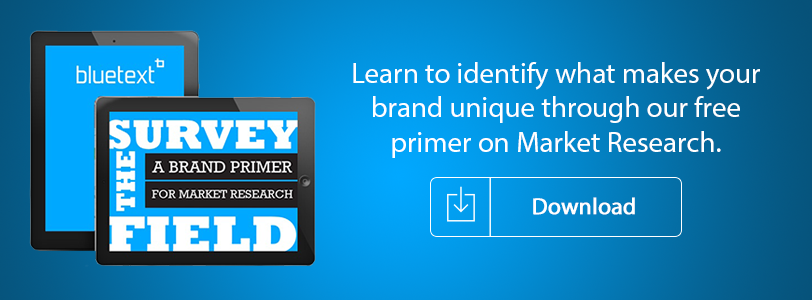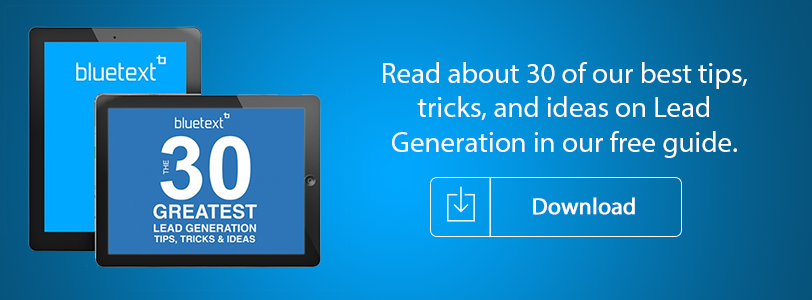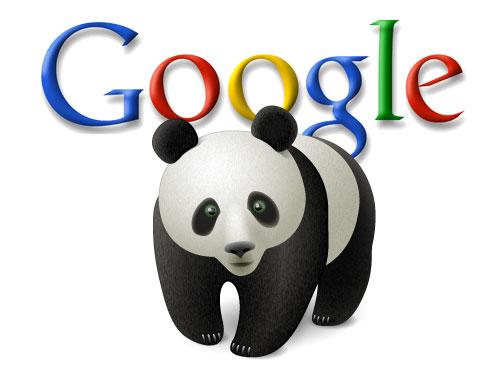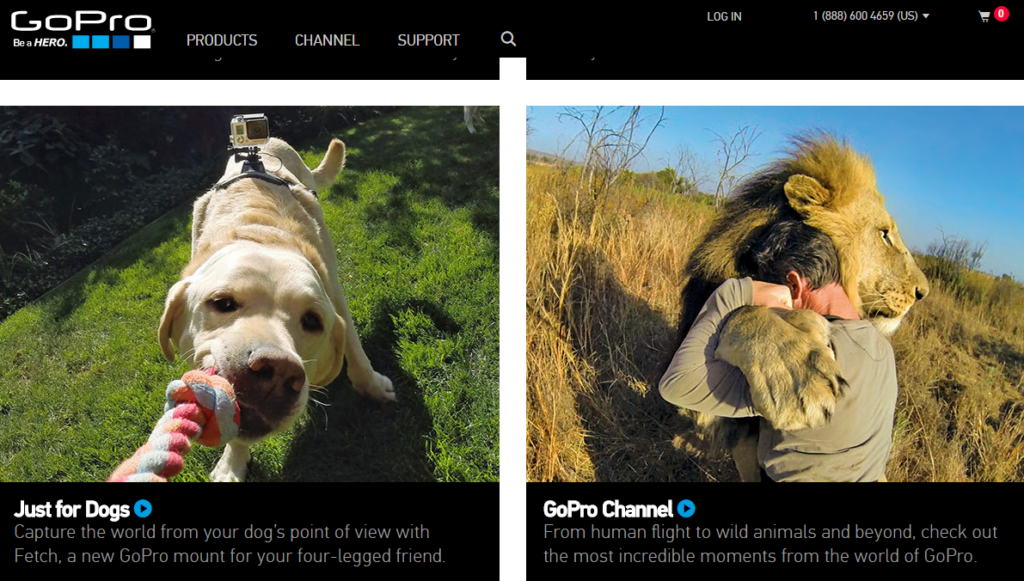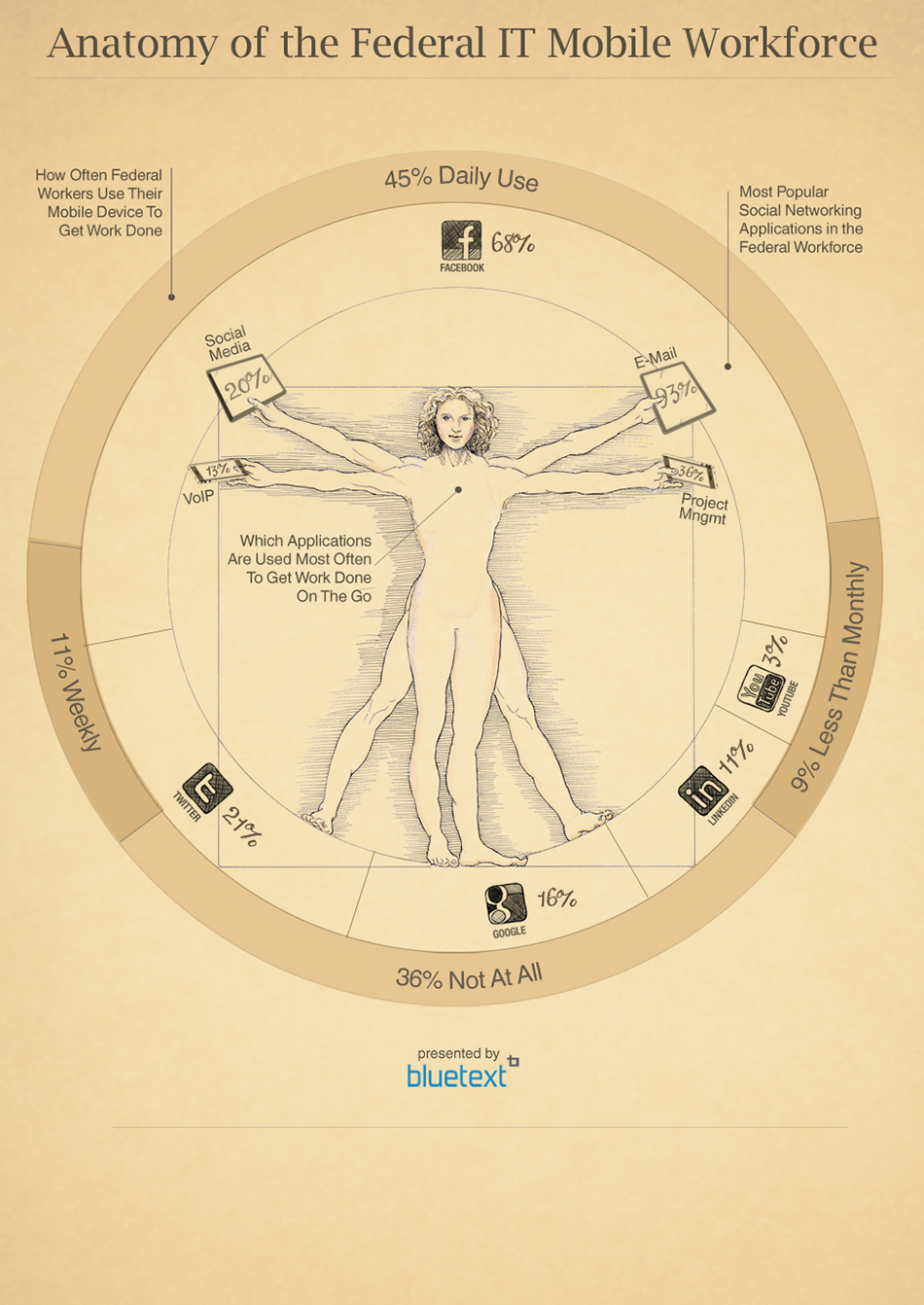Anyone familiar with The New Yorker Magazine may have noticed an interesting cover on the May 16 edition—a two-color drawing of a women stepping onto a subway car. It seems somewhat simple—not particularly eye-catching. But download an app called Uncovr (developed for The New Yorker), hold it over the magazine’s cover, and the image comes to life in your smart phone’s screen. Buildings grow off the page in 3-D form, music plays, city blocks rise up into the air, cars move around the streets. You can bring it in closer to zoom in among the buildings and see more detail, or bring it farther away for an overhead view. As long as you keep the screen anchored to the cover, an eye-popping video experience unfolds for the viewer.

This is Augmented Reality at its best. This older cousin of Virtual Reality has paved the way for the more immersive VR technology experiences through a Google Cardboard or a more expensive set of VR goggles like Oculus Rift or the Samsung Gear.
Augmented Reality is a live view of the physical environment that is augmented by computer-generated visuals. Virtual Reality, by contrast, replaces the real world with a digitally created one. Yet for marketers, they can go hand-in-hand. We’re huge fans of VR for digital marketing, and have produced a number of high-end experiences that bring customers into a virtual demonstration using state-of-the-art cameras and video editing. But new and better ways of leveraging Augmented Reality can play well along side of a VR campaign.
For marketers, this can mean an engaging way to preview a Virtual Reality campaign that can scale to as large of an audience as needed. Where VR videos require a set of goggles, Augmented Reality only needs a still graphic to key off of and an easy app download.

In The New Yorker’s example, the distribution model was simply the cover of the weekly publication. For CMOs at our enterprise clients, it can be a mailed postcard or one-pager, or it can be conveyed through a digital graphic via social media or an email. The image essentially serves as its own bar-code or QR code, bringing the experience to life. But rather than an obscure set of black bars and white spaces, the newer versions of Augmented Reality can anchor to a graphic representation that is part of the visual display, and leverages the motion-detecting software in the phone for changing viewing angles or for zooming in and out.
Augmented and Virtual Reality together deliver an amazing immersive experience that sets a marketing campaign far apart from the other noise in the market.
Designing, developing and implementing a new website can be very rewarding, especially when design and functionality work together to deliver a great experience for your audience. But it’s not always easy. Understanding the audience, how it interacts with your site, how it likes to obtain information, and what it responds best to is complicated and takes a lot of insight and experience. We know. We do it for a living.
That’s why we are proud to show off our own new website here at Bluetext. We are not the cobbler’s kids who don’t have shoes. Our website has been a key element in our success, and we keep it both cutting edge and fresh. One of our key objectives is to show off the great work we have done for our clients.
For our regular visitors, you may not notice some of the new design changes. There are additional case studies, the information is laid out in a more logical manner, and you will see new graphics and promotions. But from the back-end, it’s a significant progression for us.
The site is hyper-optimized for search engines, leveraging the latest changes in the Google search algorithms to ensure that the site gets the most organic traffic. It is closely integrated into our analytics and marketing automation platforms so we can track how people are using and interacting with the site. It’s also focused on delivering a personalized experience so that visitors can quickly get to the content they want and don’t have to revisit the home page each time. We’ve improved the load times so that everyone should have a good experience on the site. This is partly in response to Google’s rewarding good user experience, including load times for images and videos, in its search results.
We’ve also focused heavily on mobile as more content and sites are optimized for a mobile-first experience. The site is fully responsive. The creative displays are better and will provide examples of our work in more categories so that visitors can quickly find exactly what they are looking for. We’ve also enhanced the blog for greater industry insights on trends and best practices that we are seeing in the market, and have included an Ideas and Resources section on the home page.
So check it out, take it for a test drive, bang on the doors and kick the tires. Let us know what you think, and ask us how Bluetext can help you achieve greater success for your brand.
Apologies in advance if you now have the 1981 Olivia Newton-John classic stuck in your head for the rest of the day. If you live on the East Coast you have no doubt been getting “very physical” the past few days if you catch my snowdrift. After all, it’s hard work moving bottomless mounds of snow from one heap to another. What did you think I referring to? C’mon now, let’s keep it kosher.
Digital marketing became increasingly essential to consumer marketers in 2015, but there is strong evidence that digital is being elevated from just another item in the CMO toolbox to a pervasive ingredient to all marketing activities.
Exhibit A is findings from the Gartner 2015-2016 Chief Marketing Officer (CMO) Spend Survey, that focused on business leaders responsible for marketing – digital marketing in particular – across 339 large and extra-large (whatever that means) companies in North America and the U.K. A whopping 98% of CMOs consider digital marketing mainstream and that online and offline marketing are merging.
Commenting on the results, Yvonne Genovese, group vice president at Gartner, notes: “Marketers no longer make a clear distinction between offline and online marketing disciplines. As customers opt for digitally led experiences, digital marketing stops being a discrete discipline and instead becomes the context for all marketing. Digital marketing is now marketing in a digital world.”
In our marketing projects with leading consumer, business and public sector organizations, we are seeing significant demand for the “digitally led experiences” that Gartner references. There are a few digital marketing trends in particular that consumer marketers should keep their eyes on in 2016:
Smartphone ad geo-fencing
Consumer marketers recognize the need to map digital marketing into the consumer buyer’s journey when these digital assets can have the biggest impact. At what moment and location will the consumer be most inclined to play a video, read a text message or view an in-app ad? Smartphone ad geo-fencing enables marketers to reach an audience when they are most receptive to your brand, product, or service marketing.
Think about a consumer’s mindshare when entering an airport. In the traveler waiting for a flight, you have a captive audience thinking about various aspects of their business or leisure travel. Do they need accommodations, transportation, dinner reservations, or other concierge-type services? Smartphone ad geo-fencing can feed location-based ads to travelers once they enter an airport at a time when they are primed to take action.
Virtual Reality
Yeah, yeah, you’ve been hearing about virtual reality headsets for years. But VR is primed for mainstream in 2016. Oculus Rift has set an April release, in addition to other planned releases for HTC Vive and Playstation VR, are poised to put VR in the hands of consumers for hundreds – not thousands – of dollars. But the fact is that consumers don’t need to even shell out this kind of cash to experience virtual reality.
My colleague Michael Quint recently blogged about how Bluetext is leveraging Google Cardboard to bring virtual reality to the masses. Today, we are designing a digital briefing center for a client in virtual reality by marrying, in Michael’s words, “our creativity, advanced video capabilities, and cutting-edge app development to help a software company more effectively tell its story.” In this case it’s a b2b company, but we fully expect b2c virtual reality projects to become increasingly commonplace as the year progresses.
IoT
Consumer marketers are not alone in trying to get their hands around the Internet of Things, and how to leverage IoT for digital marketing efforts. In my end-of-year blog post, I looked at the IoT opportunity for digital marketers in 2016, and what it comes down to is that marketers will be able to capture a growing volume of data on consumer behavior and consumption patterns from connected devices and sensors, and then engage with consumers more effectively based on this data.
Marketing Automation
In a Forrester report, “2015: The Year of the Big Digital Shift,” more than half of marketers admitted their digital marketing is more tactical than strategic. Digital marketers are a victim of their own excess: Forrester reported that investments in marketing technology grew 3.4 percent in 2014 and is projected to rise another 4 percent this year. So consumer marketers will not lack for tools and options, but 2016 is the year when CMOs and their teams must invest time to identify the optimal set of tools to catapult their initiatives. They also most move beyond an understanding of the ‘basic’ capabilities of marketing automation tools, and shift from students to experts fully versed in the in’s and out’s of marketing automation.
We all remember playing the game Battleship as kids, where the goal was to sink your opponent’s fleet of ships by guessing where they were placed on a grid. The origins of this simple game actually goes back to World War I, when the Allied Navy had developed large artillery guns but didn’t have the technology—such as sophisticated Radar—to know where to aim. Just as in the real life naval battles of a hundred years ago, the game of Battleship involves a series of guesses.
So what’s that have to do with smart website design? Well, here’s an easy trick to remember if you want to win the game. Line up your entire fleet along the outer edges of the grid. While the mathematical odds of being sunk by your opponent are theoretically the same no matter where you place your ships, in fact recent research into human nature proves that our guesses aren’t truly random. Instead, we tend to adhere to predictable patterns when it comes to the focus of our attention on the grid, and the same preferences hold true in the digital world.
The trick in Battleship is to avoid the places that your opponent is most likely to look. In a 2009 study that looked specifically at where people are most likely to focus on a grid, a phenomenon known as “the middle bias” was identified. Put simply, our eyes are three times more likely to gravitate towards the upper middle section of a grid or screen than towards a random location. The top most frequently chosen spots are all clustered right around the middle. Anything on the outer edges is far down the list.
By now, I hope the implications have sunk in. If there’s important information you want a visitor to quickly find on your website, don’t hide it along the edges—take advantage of the “middle bias” where their attention will hit first. Like the game of Battleship, web screens are a highly visual medium, and as we continue to adapt our thinking and processing to the digital world, smart design and placement will continue to influence our visual habits, especially when it comes to what we notice and engage with online.
This is only one of the more recent findings that new research into human behavior is revealing when it comes to how people interact with their screens. In another study, researchers used eye-tracking technology to see how people made choices when a number of options were displayed across a web screen. The findings showed that where the subjects looked on the screen depended on how many options they had in front of them. The more options on the screen, the more that their eyes settled near the center of the display. Those first locations remained the most popular spots even when additional screens were shown with more options. Just as importantly, the study demonstrated that decisions about which options to choose were heavily influenced by where their eyes focused.
Shlomo Benartzi, who chairs UCLA’s Behavioral Decision-Making Group in the Anderson School of Management, reaches this conclusion in his new book on web design called “The Smarter Screen: Surprising Ways to Influence and Improve Online Behavior:”
We like to imagine our choices as reflections of our conscious desires… But this data suggests that our choices are often shaped by the perceptual habits of the eye, which are drawn to certain items and areas of the screen. Sometimes, salience matters more than preference.
The results of this and similar studies is that subconscious preferences can play a larger role in shaping decisions on screen. Again, the implication should seem obvious: If you want a visitor to your home or landing page to make a particular selection from a range of options, place that option in the center of the selections and not on the edges.
At Bluetext, we spend a lot of time evaluating visitor preferences and habits to maximize their engagement when designing websites and digital marketing campaigns for our clients. As with all digital experiences today, our clients are competing for the attention of their target audiences, and understanding human nature can mean the difference between conversion and abandonment when it comes to their customers.
The team here at Bluetext will wind 2015 down with significantly more Internet of Things (IoT) domain expertise than when the year began. Several clients are playing a key role in shaping the future of this nascent technology – one that is sure to touch more consumers, businesses and government agencies in 2016.
Digital marketers are typically not “Naughty by Nature,” but given that Gartner projects a 30 percent increase in the number of connected “things” next year, it is a safe bet that we will be down with IoT. A study conducted by 2nd Watch earlier this year found nearly six in 10 U.S. IT and business executives leveraged IoT/machine data for digital marketing, though the majority (two-thirds) acknowledged these efforts were in the initial stages.
While the Internet of Things presents a massive opportunity, tapping into it won’t be easy. Marketers, already struggling to stay afloat amidst a sea of data, will find that the exploding number of IoT sensors has them drowning in it. Sure enough, data volume is no longer the problem; it’s being able to analyze data and extract meaningful insights from it that will drive successful marketing and advertising campaigns. Capturing and analyzing this data will place an even greater premium on having the right digital marketing tools to automate as much of this process as possible.
As agencies and brands gain a handle on the data volume, look for the Internet of Things to unlock several new digital marketing opportunities in 2016.
- Use IoT for marketing to user behavior patterns – Smart home technologies such as connected thermostats and smart fridges offer marketers an opportunity to reach consumers at the right time and with the right message. Thermostats and home energy management mobile apps empower marketers to tap into a wealth of data regarding energy consumption patterns and activity patterns within the home in a way that can trigger marketing efforts around products (HVAC, filters, windows, roofing, etc.). Or consider the sensor data pushed to brands from smart fridges able to recognize the products you buy and supply levels in a way that can feed discounts and coupons at the opportune time and impact brand purchasing decisions in the process.
- Use IoT to own the buyer journey – The ability to reach target audiences more frequently and with greater personalization throughout the awareness, consideration and decision stages of the buyer’s journey positions IoT to augment traditional touch points such as offline and online advertising, social media, mobile, email, etc. For B2C, smart TVs offer brands a captive audience that can be marketed to before they conduct a product search via Google or in person at the store. For B2B, the ability for technology vendors to understand when printers need to be replaced or cartridges refilled, when warehouse suppliers are running or when businesses are not using energy efficiently can accelerate the buyer journey.
- Use IoT to pull and push data – At this point in its evolutionary cycle, the great value of IoT is that digital marketers can access real-time information on how business users and consumers use products, when they use them, and what motivates them to do so. 2016 will see the early stages of the digital marketer use case shift from pulling all this data to then using analytics to push information back.
- Track where wearables are headed – Try saying that five times really fast. Wearables may be among the most hyped aspects of the Internet of Things, and the market trajectory remains uncertain. The Apple Watch sparked a great deal of imagination pre-launch, and as 2015 comes to a close the technology giant – and its customers – are still feeling their way on how these devices can best be used. Internet connected wearables are poised to extend far beyond just watches; from clothing and shoes to augmented reality devices there exists an opportunity for brands and agencies to reach audiences beyond smartphones and tablets.
- Cars may be ground zero for IoT – Americans drive more than 29 miles per day, making two trips at an average duration of 46 minutes. Those really depressing figures come courtesy of a 2015 study by the AAA Foundation for Traffic Safety and the Urban Institute. For commuters, these numbers are tough to swallow; but for digital marketers identifying the best places to reach target audiences, they are numbers that cannot be ignored. Vehicles are more connected than ever through software systems, and as the vehicle becomes just another data collecting sensor on the move, advertisers and marketers gain valuable insights into when and where people go. The in-vehicle ads become more targeted and valuable, and brands can literally change the course of vehicle destinations based on consumer data.
To learn more about the possibilities IoT offers, contact Bluetext today:
This goes to the heart of every company’s SEO strategy. The clues come in a patent filing for something called an “implied link.” Before I explain why this is important, let’s first take a trip back to the early days of SEO and link-building.
Early on, Google would evaluate where a site ranks for any given search by looking at how many other sites were linking back to that page. If you were a valuable site, visitors would link to you in order to share that with their audience or to cite you as a good resource. That type of analysis would seem like an obvious way to measure the quality of the site.
But SEO gurus are always trying to stay one step ahead, and once link-farms and other shady techniques for creating myriads of back-links became prevalent, Google recognized that there’s no way to verify whether a link was added because a user genuinely likes the content or whether the link was paid for. The quality of a link can be corrupted through a wide variety of Black Hat tricks, and thus the value of all links came into question.
And while Google has updated its algorithms on numerous occasions over the years, that doesn’t mean that links aren’t still valuable for SEO. They are just much less valuable than they once were. Google is now much more selective about the quality of the site that is doing the linking. The New York Times continues to be the gold standard for the most valuable links.
But what if a publication like the Times mentions a brand or its product without a hyperlink? Shouldn’t that carry some weight, even though it doesn’t include a url?
That’s where Google’s patent comes into play. SEO insiders believe that the patent is related to last year’s Panda update, and that it describes a method for analyzing the value of “implied links,” that is, mentions on prominent sites without a link.
Let’s say the Times mentions in an article the website of NewCo as a great resource for a particular topic, but doesn’t include a link to NewCo’s website. Previously, there really wasn’t a measurable way for NewCo to benefit from that quality mention. With implied links, Google sees the mention in the Times article and factors that into its search ranking.
Implied links are also used as a sort of quality control tool for back-links in order to identify those that are most likely the result of Black Hat tricks. For example, if Google sees numerous incoming links from sites of questionable quality, it might search for implied links and find that no one is talking about that brand across the internet. Google looks at that evidence from the implied links to determine if the back-links are real and adjusts the rankings accordingly.
Here are four tips for adapting to Google’s focus on implied links:
• Don’t abandon your link-building strategy. Earned links are still effective when they come from valued sites. The most valuable links will still be for relevant, unique content.
• Brand reputation is key. When asking for mentions on other sites, try to have them use your brand name as much as possible. The same is true when you are posting on other sites. Use your brand name. Do the same in descriptive fields such as bios at the bottom of contributed content.
• Engage your audiences in conversation. Similar to word-of-mouth marketing, the more your brand name is being mentioned, even without links, the more it will benefit your SEO. Encourage that conversation as much as you can.
• Be creative and flexible. Google is always evolving its search engine algorithms. It’s difficult, but not impossible, to predict how they may change over the next year, or how effective today’s best practices will be tomorrow if you know how to follow the clues.
Innovation in content marketing is nothing new, but sometimes it takes well-known brands and how they drive their marketing operations to recognize what’s really valuable. We’ve gathered some top content marketing examples and tips from some of the most recognizable global companies. Some aren’t only about innovation, but rather they show companies sticking to what’s most important about that brand. Others are more on the cutting edge. Here are my four top picks:
1) Pick a strategy that is core to your brand. IBM is known for three key assets: Its technical expertise, its role as long-time market leader, and its position as a respected source of IT information. To match its steady flow of content to its brand attributes IBM follows the same path. To uphold its reputation as a technology leader for more than a century, it has to produce authoritative content that underscores its thought leadership. Because the company is a technical powerhouse, it has to ensure that the content is technically authoritative. And because the company is trusted by millions to provide detailed descriptions of challenges and solutions, it has to make sure that its content is at an expert level. While trying to follow in IBM’s footsteps is not an easy task, it provides a strong lesson for how to approach your content. It should be well-written, possess authority, and have an expert voice. That’s what customers want and respond to.
2) Don’t be boring. This might sound obvious, but with many business-to-business or business-to-government solutions, it’s not always easy to sound interesting on technical topics. Resist the temptation to edit out content that might be fun and relevant, and that plays on popular topics or cultural experiences. Take Hootsuite as an example. There’s nothing very sexy about a tool that allows you to manage your social media posts. It’s mostly a dashboard with a number of useful applications tacked on. But Hootsuite rose to immense popularity by playing off a popular theme, the HBO television series “Game of Thrones.” It created a video called “Game of Social Thrones,” using graphics and music similar to the television show to demonstrate its capabilities. Each popular social platform has its own Game of Thrones city, and logos and images are cleverly used throughout. Timing is everything, of course, and the Hootsuite video garnered lots of buzz on YouTube. Hootsuite also makes sure that its content, even when serious, is fun, increasing its popular appeal. So while your brand or product may be technical and specialized, you can still write content with which your audience will identify on a popular level. The lesson: Don’t feel that you need to be serious all of the time. Create some fun, light content now and then.
3) Tell stories. It’s easy to fall back on technical explanations, and these are often important when conveying the value that a product or solution brings to the market. But telling a human interest story that illustrates what that technology brings to customers can be much more penetrating. Few do this better than Microsoft, whose “Stories” blog posts rarely even include the term software. Instead, they tell stories of how Microsoft technology has helped people, and in some cases changed their lives. In one example featuring sportscaster Daniel Jeremiah, the story is one of the human experience, of triumph, challenge and redemption. Daniel explains how as a scout for the Philadelphia Eagles, when he didn’t trust his instincts and the data at his disposal, he lost the opportunity to push for Seattle Seahawks superstar Russell Wilson. It’s a fun,personal and powerful story, and one that demonstrates Microsoft’s leadership not with a hard sell of its products, but with a tale that will stick in your mind.
4) Go visual. Visual images draw attention, tell a story, and help illustrate a brand’s true value. The problem is, many companies, particularly in the technology space, don’t believe they have much they can show using photos or high-impact graphics. I’m going to put forward GoPro as a great example of a company that relies on the visual to tell it brand story. And yes, I recognize that it’s not a fair comparison—a company that sells action-oriented video equipment of course would have great videos to show off its products. But the thing about GoPro is that it almost never actually shows its cameras in its marketing efforts. Instead, GoPro focuses on its users. One of its leading cameras is called the Hero, and its campaign is to turn its customers into heroes. Much of its content is created by passionate users who are, in turn, becoming public heroes. Companies who aren’t in the video business can take a similar approach. Tell the story of your customers and end users using video and other visual assets to make them the heroes—for the challenges they are addressing and the problems they are solving. At the very least, use visual content and images to enhance your text-based content.
Taking an innovative approach to content marketing can pay off in spades for any brand willing to think creatively and act accordingly. But sticking to some basic truths about what customers want and expect will increase your brand footprint and drive market recognition and share.
The lowly infographic, once a novelty but more recently a must-have for markets trying to quickly a complicated message, seems to be in the twilight of its existence. What’s more properly referred to as a data visualization used to command the attention and admiration of marketing professionals everywhere. It wasn’t too long ago that such iconic and influential infographics as Aaron Koblin’s map of aircraft flights in the U.S. was dazzling us and pushing everyone towards this engaging new medium.
It’s easy to see why infographics became the darling of the marketing world. People like to be able to visualize complex issues. Our eyes are more comfortable scanning images than wading through data. And with the explosion of big data, making sense of all for that information through text alone can be difficult. We have worked with dozens of clients on ways to visualize and animate their complex data. The truth about infographics is that they are effective when done well, and will continue to be a valuable asset in the marketing toolkit.
Then why do they seem to be falling out of favor? Indeed, according to Sarah Rapp with the portfolio-sharing site Behance, “Infographic posting generally rose steadily from 2007 to 2012, where it peaked, and has begun to decline since then.”
As Fast Company contributor Mark Wilson wrote in a recent blog post, “A few years ago, the Internet was awash in groundbreaking data visualizations…Today, you’d be lucky to find a cheap knockoff in a world dominated by crappy promotional infographics churned out for viral attention.”
There are a few trends that help explain why infographics may seem like they are losing steam. One of the most obvious is the move to mobile, and as any reader of our recent blog post on the latest Google search algorithm change has learned, websites that aren’t mobile friendly are getting dinged in web searches. The reason is obvious—beautiful and intricate graphics typically do not translate to small-screen devices. If smartphones and tablets make up more than half of today’s web traffic, that’s a massive amount of viewers on which a sprawling data visualization would be lost.
Another is more basic. Many infographics try to pack in so many details and so many data comparisons that they become incomprehensible. Rather than simplifying information, they end up confusing the viewer to the point of their eyes glazing over. Good designs are simple and eye-catching, not complicated and mind-numbing. Here’s an example of data overload:
Finally, as Mark Wilson notes, in many ways infographics have gone mainstream. “Once a playground for independent designers, data visualization has evolved into something more mature, corporate, and honest about its failings,” writes Wilson. “The quirky, experimental infographics that once peppered the Internet may be disappearing. But that’s only because data visualization, as a medium, has finally grown up and gotten a job.”
Bluetext comes at visualization from a different angle. We often work with our clients on what we call “StoryGraphics.” StoryGraphics, as the name suggests, tell a story rather than relying on comparative data to draw comparisons. In many cases, this is because the client may have key messages but not have data that lends itself to clever charts or graphs.
In a design we created for Google recently, the StoryGraphic tells how geospatial information can be used in space, for aviation, at all levels of commerce but also on the water and under the seas. A huge success for the Google enterprise team, this graphic would never have succeeded as a typical infographic.
Another Bluetext example shows the move by Federal workers towards mobile devices. While data plays a role in the graphic, it leverages an iconic image to draw the viewer into the story that is being told.
Some of our most compelling client examples do rely on comparative data, but focus on a limited number of statistics to more effectively tell the story. For a design for Georgia Pacific, one of the world’s leading wood products companies, we created a pie chart that took the form of a forest with just one cut down the middle to visualize the difference between government-owned and privately owned forests. The design instantly conveys the surprising fact that there are more private forests than government forests.
You can find compelling and intriguing examples of Bluetext StoryGraphics and infographics here in our portfolio. The bottom line is that marketers can turn to more sophisticated ways of using graphics to tell stories than a confusing jumble of facts and figures.
Tactical is a great word…if you are in law enforcement or the military. As a digital marketer, however, tactical has come to imply – fairly or unfairly – a lack of strategy, creativity and inability to grasp how day-to-day activities fit into the bigger picture.
In the recent Forrester report, “2015: The Year of the Big Digital Shift,” more than half of marketers admitted their digital marketing is more tactical than strategic. While a number of factors may explain this, digital marketers are a victim of their own excess: Forrester reported that investments in marketing technology grew 3.4 percent in 2014 and is projected to rise another 4 percent this year.
Marketers looking to spend their growing budgets will find an ever-expanding landscape of digital marketing tools at their disposal. Ask peers for recommendations on tools for content marketing, marketing automation, mobile marketing, SEO, and social media monitoring and you will likely get dozens of answers. It reminds me of the viral marketing videos from Blendtec’s, “Will It Blend” campaign, whereby items ranging from iPhones to baseballs are placed in a Blendtec blender to see if, in fact, they will blend. Throwing a bunch of digital marketing tools into a blender and just hoping they will “blend” together into a coherent strategy doesn’t work.
To ensure digital tools enhance rather than complicate your broader marketing strategy, consider the following:
Conduct gap analysis
Marketers must draw a definitive line between nice to have and need to have digital tools. In my recent column for PR Week The Hub Comms, I reviewed a new gap analysis tool from SAP that asks the marketer a series of questions about their organizational profile, marketing programs, current systems and processes. Based on the answers, the tool makes personalized recommendations on focus areas for marketing investment to address existing gaps. Marketers should not make tool investment decisions before having a firm grasp of existing gaps, and then evaluating which tools can plug them.
Avoid tool redundancy
There are purpose-built digital marketing tools designed to address a single pain point, such as SEO or content marketing. But it is more common today to find tools that try and do multiple things. For example, one tool might be capable of social media management, PR media measurement and reporting, while another might include a PR media database and some social media management capabilities. Many of these tools don’t run cheap, which means you do not want to be paying multiple vendors for essentially the same service.
Don’t repeat the same mistakes
The path of least resistance is continuing to use the same tools year after year. It is certainly possible that a small handful prove invaluable and are worthy of your loyalty, but the fact is that marketing needs evolve over time and your marketing strategy must adapt accordingly. The key point is that your digital marketing strategy should drive the tools you use, not vice versa. Purchasing a tool or tools and then building a marketing strategy around the tool’s capabilities is a backwards approach that will leady to tactical, rather than strategic decisions. Evaluate what worked last year and evaluate tools that will help you achieve objectives in 2015.
Don’t buy tools in a vacuum
Marketers, particularly those in the technology industry, often talk about how their company or client solutions break down silos and allow for information to be more easily shared. We see that playing out across agencies as far as a need to integrate digital marketing tools with other areas of the business. Burson-Marsteller recently unveiled a new approach aiming to combine its data analytics and Web data tools with creative and production capabilities, indicative of efforts industry-wide to cast the benefits of analysis, data and measurement organization-wide.
While it might seem like a bad movie plot, websites that aren’t friendly to mobile devices are about to be in for a rude awakening. In late February, one of Google’s top webmasters announced in a blog post that the dominant search engine was about to make a significant change to the way it ranks search results. Beginning on April 21st, its search algorithm would increase the weight it gives when returning search results to what it called “mobile friendliness.” Not only does that mean that mobile-friendly websites would enjoy better results, it also means that sites that don’t meet those standards will face the consequences. Some have already dubbed it “Mobilegeddon.”
The stampede from desktops to the wide variety of shapes and sizes now available as tablets, cell phones and even wearables—think Apple Watch—that has taken place over the past several years is only getting larger. A recent survey by ComScore Networks—a firm that analyzes internet traffic and trends—found that in the final three months of last year, desktop searches in the U.S. decreased, while the searches with smartphones jumped 17 percent. The volume of tablet searches increased 28 percent.
And while many of our clients have made this shift to mobile friendly, they are in the minority. A survey by Didit.com took a look the sites of the largest companies to see if they have adopted a mobile-friendly approach. Didit looked at the home pages of publicly-traded companies on the Standard & Poor’s top 100 list by checking them against Google’s “mobile-friendly test page.” The result—some 25 percent of those home pages failed the test, including the Walt Disney Company, a brand that is typically at the forefront when it comes to leveraging technology for visitors to its theme parks.
The Disney home page looks great on a desktop. But as the screen size gets smaller on table and mobile devices, the Google tool found that the text was too small, the links overlapped each other and the content was often wider than the mobile screen.
We’ve been working with our clients for the past four years to make the move to responsive designs that automatically resize their user interface depending on the size of the display screen. A responsive site takes a standard website and instructs the mobile device on how to display it properly. Responsive websites can handle any resolution with changes in CSS files, which affect how the elements on Web pages are presented. Computers, laptops, smartphones, and tablets will all display the website in the best way possible.
One of the reasons responsive design is so important is the “fat finger” problem—as menus shrink, it becomes nearly impossible to engage the functionality since our fingers are too big. Responsive designs shift the menus from ones that are driven by discreet buttons to larger options that are easier to see and easier to select. Without this type of design, visitors will be frustrated and leave the site in search of one that is user friendly.
This approach insures that the website appropriately presents itself on every size display, from the smallest to the largest. Another approach is to have a separate mobile website. Yet, since new devices in different sizes seem to hit the stores about every 10 minutes, this could be a large problem for websites, and certainly would not be cost-effective.
To put this in perspective, while this is a significant move by Google, it doesn’t mean you have to panic. Some of us have been advising our clients for several years that more and more users are accessing their websites via tablet and mobile devices. Google is simply responding to the shifting trends of how consumers are accessing the web. It will not unduly penalize a website that doesn’t immediately meet its requirements like it did in previous search changes—you can still make the move to a mobile-friendly site and see your rankings adjust accordingly. And if you haven’t been paying attention to the marketplace and to the shifting needs of your audiences, you may have a bigger problem than Mobilegeddon.
